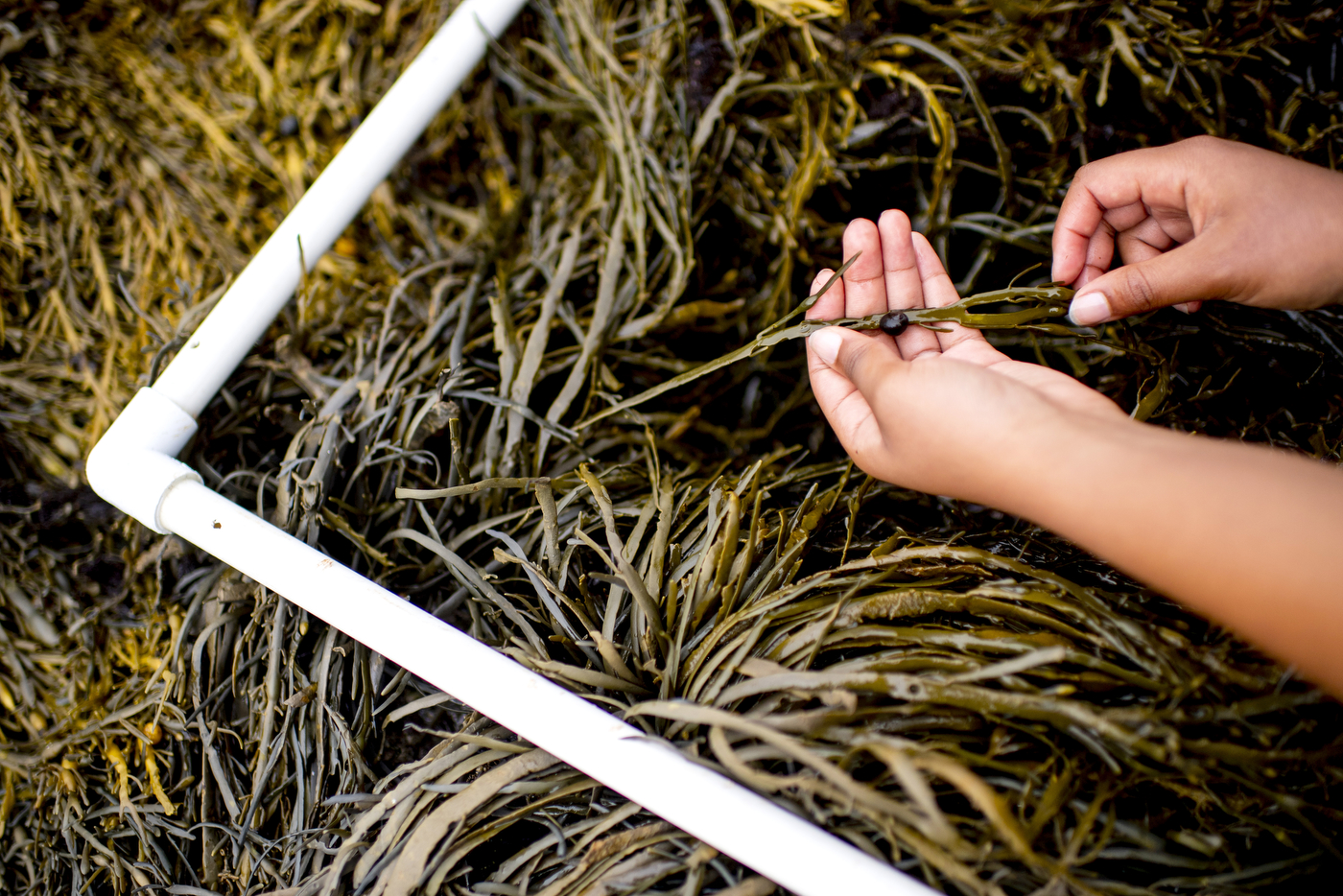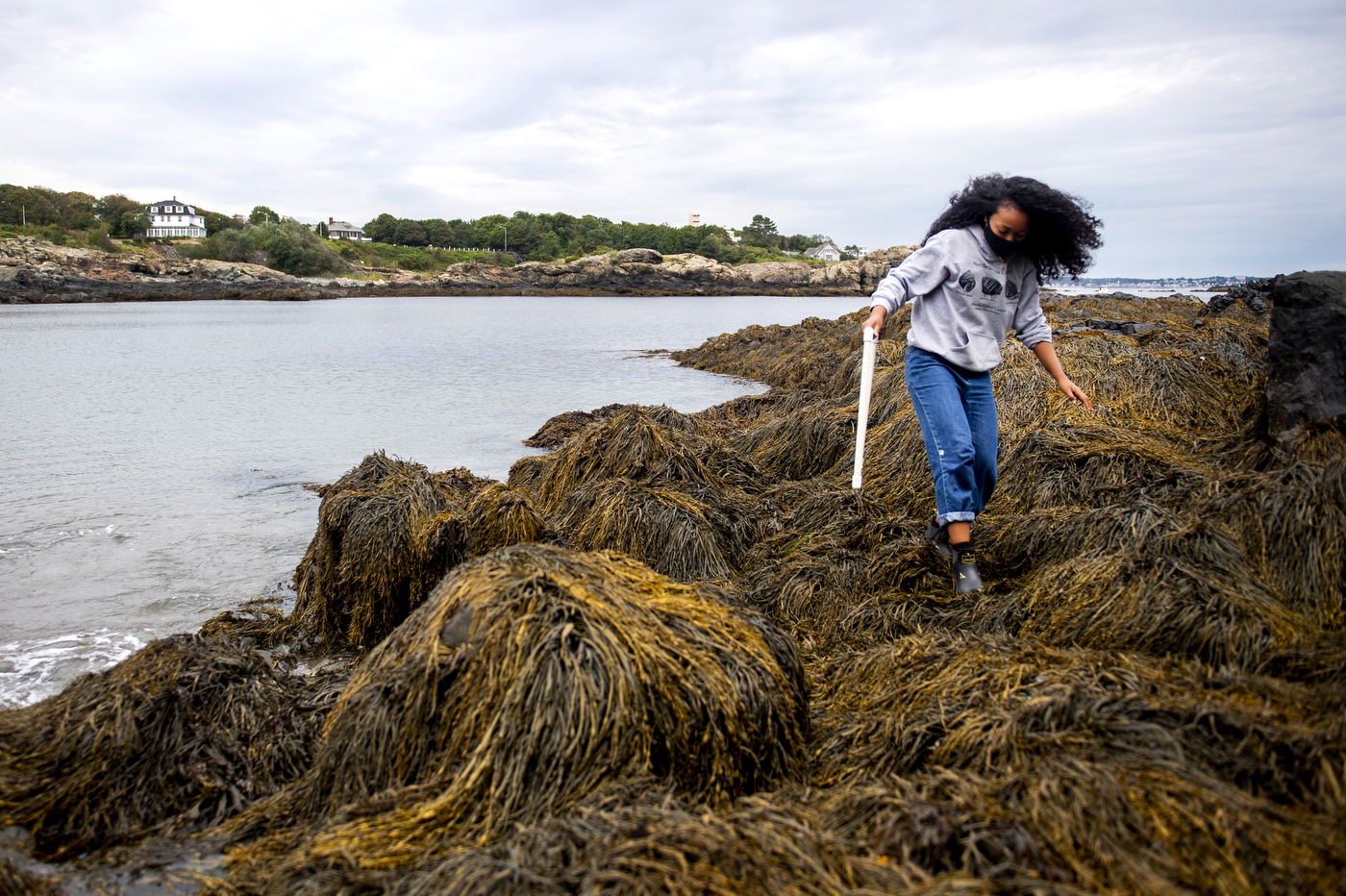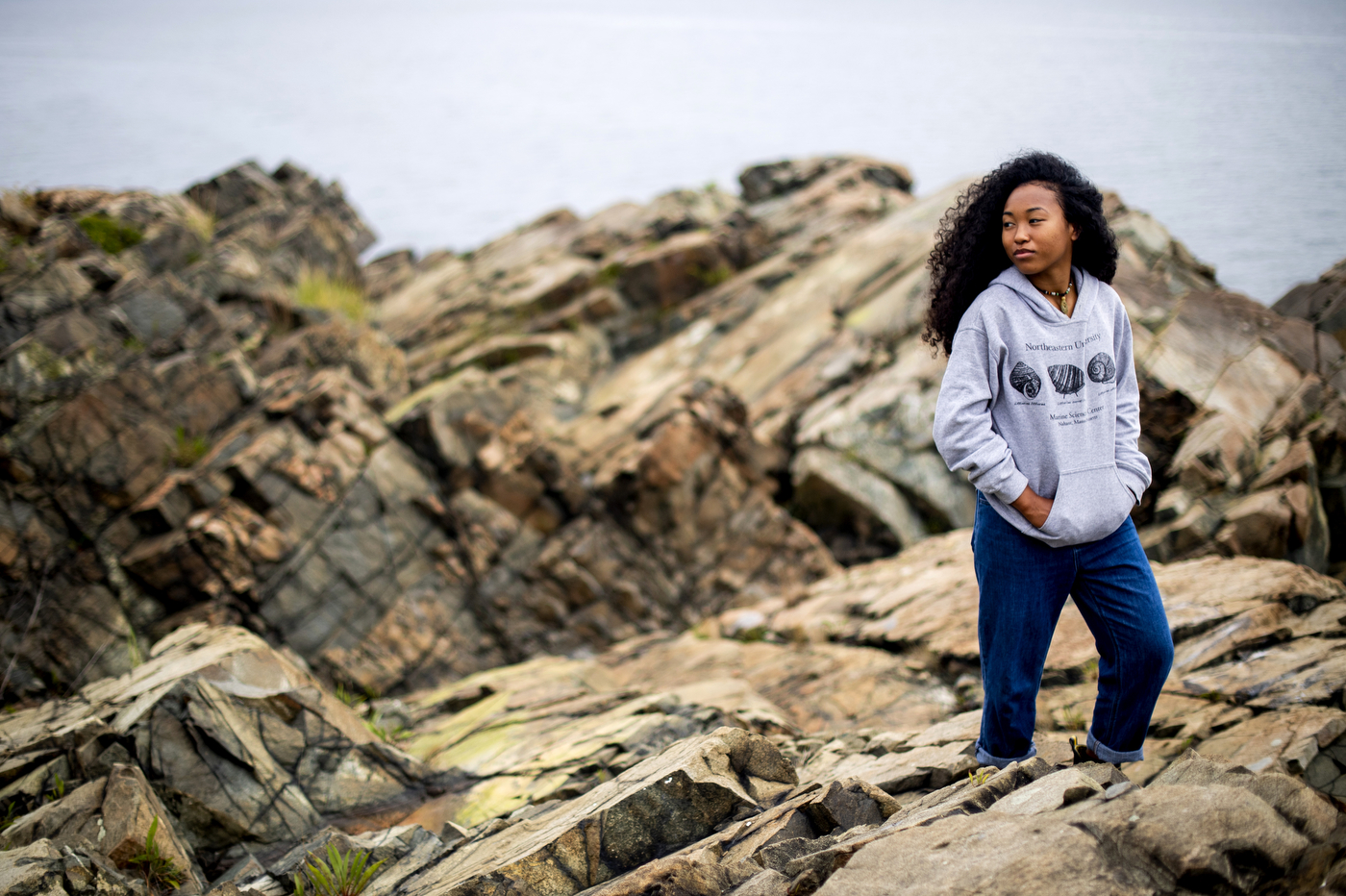She studies fish that look like zebras and rats to better understand the ocean’s ecology

Rebeca Rosengaus needed someone to help her rip the wings from her winged termites. In Jeriyla Kamau-Weng, then a freshman at Northeastern eager to get her foot in the research lab door, Rosengaus found a willing participant.
That’s how the marine biology student ended up studying the epigenetics of the reproductive physiology of termites with Rosengaus, an associate professor and behavioral ecologist at Northeastern, her first year in college. And then she moved on to fish.
This summer, as part of a National Science Foundation program, Kamau-Weng, now in her third year at Northeastern, spent some time in Friday Harbor, a seaport town in Washington. There, she studied the spotted ratfish, an odd-looking deepwater species that has teeth that resemble a rat’s, but is a mysterious distant relative of sharks, skates, and rays. Very little is known about these Pacific Ocean-dwelling cartilaginous fish, which belong to a “very weird” family of chimaeriformes, but Kamau-Weng intended to do a scholarly deep dive into their muscles and breathing mechanisms.
“I was working on measuring the pressures that are generated by the compression and decompression of their gill chambers,” Kamau-Weng says. “It’s not a novel study, but it is novel in the results.”


The results recorded by a previous study measured 10 pascals in the ratfish, which suggested that the fish were using a very low pressure system of movement to move water over its gills—in other words, they were barely breathing, says Kamau-Weng. She found that to be not the case.
Her research showed that the ratfish’s pressure system for moving water over the gills is actually similar to that of other fish, which typically get their oxygen from the water using their mouths and then flushing the water over the gills and out the gill opening.
This research has important implications for the ratfish’s sustainability and survival, she says. By understanding how these fish function, researchers can devise better management strategies for protecting them, and by extension, the balance of their deepwater homes.

This fall, Kamau-Weng is launching a peer-mentoring program for students in the Marine and Environmental Sciences Department while participating in the #BlackInSTEM movement on Twitter. Photo by Ruby Wallau/Northeastern University
“This is significant because the biology and ecology of the ratfish, and the chimaeriform family in general, is still poorly understood,” says Kamau-Weng. “These fish could play a very important role in maintaining the ecological balance in their deepwater habitats.”
This fall, she hopes to resume research she initiated before the COVID-19 pandemic struck. Working with Jacob Daane, a postdoctoral student of marine and environmental sciences and professor H. William Detrich, Kamau-Weng conducted gene knockout experiments in the zebrafish, a technique that is used to turn specific genes off.
Using CRISPR-Cas9, she and her colleagues attempted to turn off the same genes that are turned off in the Antarctic icefish, which are the only known vertebrate without red blood cells. To compensate, the icefish have adapted to the continent’s freezing waters by absorbing oxygen from their environment.
The researchers wanted to see how, by turning off those genes, the zebrafish’s cardiovascular structure and other structural and developmental characteristics would develop.

“The significance of this research lies in increasing understanding for diseases that afflict the cardiovascular systems of humans,” Kamau-Weng says. “By understanding how icefish are able to function without red blood cells, we can better understand and perhaps improve treatment for people with similar conditions like anemia.”
With Allison Noble, a fifth-year marine biology student, Kamau-Weng will kickstart a peer-mentoring program in the Marine and Environmental Sciences Department this fall. The first of its kind in Northeastern’s College of Science, the program will pair upperclassmen with undergraduates to help guide them through courses to take, pitfalls to avoid, and opportunities in which to get involved on campus, as well as career pathways.
“We started it because a lot of people we’re hearing had a rough start,” she says. “They didn’t know who to turn to or didn’t know what classes to take and just were having a hard time in general finding what career options are available for environmental studies, science, and marine biology.”
Kamau-Weng recalls being impressed by how Northeastern took an interest in students interested in marine life science well before she started attending the university. In high school, she enrolled in a science research program offered through the University of Albany in which she undertook a project to study eelgrass wasting disease, among other topics. She learned about a summer program hosted by the Marine Science Center in Nahant, Massachusetts, where she conducted field research on intertidal ecology. She subsequently presented her findings at state fairs across New York, taking home prizes for her research.
Kamau-Weng’s love for marine biology was reinforced by a Dialogue of Civilizations course on coastal sustainability with Mark Patterson and Brian Helmuth, both professors of marine and environmental sciences, in Hong Kong and Malaysia last summer. She’d been wavering in her decision to continue in the field, fearing it might limit her career prospects.
“Being in another country and seeing all these people who are passionate about the world’s oceans made me really excited to stay in my field,” she says.
Kamau-Weng has recently started adding her voice to the #BlackInSTEM movement on Twitter, which aims to promote visibility for Black students and professionals in the fields of science, technology, engineering and mathematics, while also encouraging conversations about racism in those fields.
“There’s so much discrimination we have to put up with silently because it’s considered a professional space, but we’re not really looked at as professional inherently unless we change up our looks, change how we speak,” Kamau-Weng says. “But by doing that, aren’t you just promoting one way of looking at things really—and that’s acceptable?”
Kamau-Weng is pursuing a master’s degree in environmental science and policy, with aspirations for a doctoral degree. She hopes to land a job at the National Oceanic and Atmospheric Administration someday.
“I’m interested in the industry side of marine science outside of academia,” she says, adding, “inevitably, I think I want to try to become a professor in a leading research institute teaching comparative anatomy or marine biology.”
It’s a safe bet that when she’s not studying fish, Kamau-Weng is dining on the catch of the day. Her fascination with the species can be traced back to her childhood.
“When I was little, I really liked eating fish and I thought wow these things taste so good, and then I’m like, I should study them so I can have more fish to eat in the future,” she laughs. “It’s not the purest reason but that’s the reason.”
And no, learning about them over the years hasn’t curbed her appetite.
“I try to be sustainable about it,” she insists, “[but] they taste so good.”
For media inquiries, please contact media@northeastern.edu.





